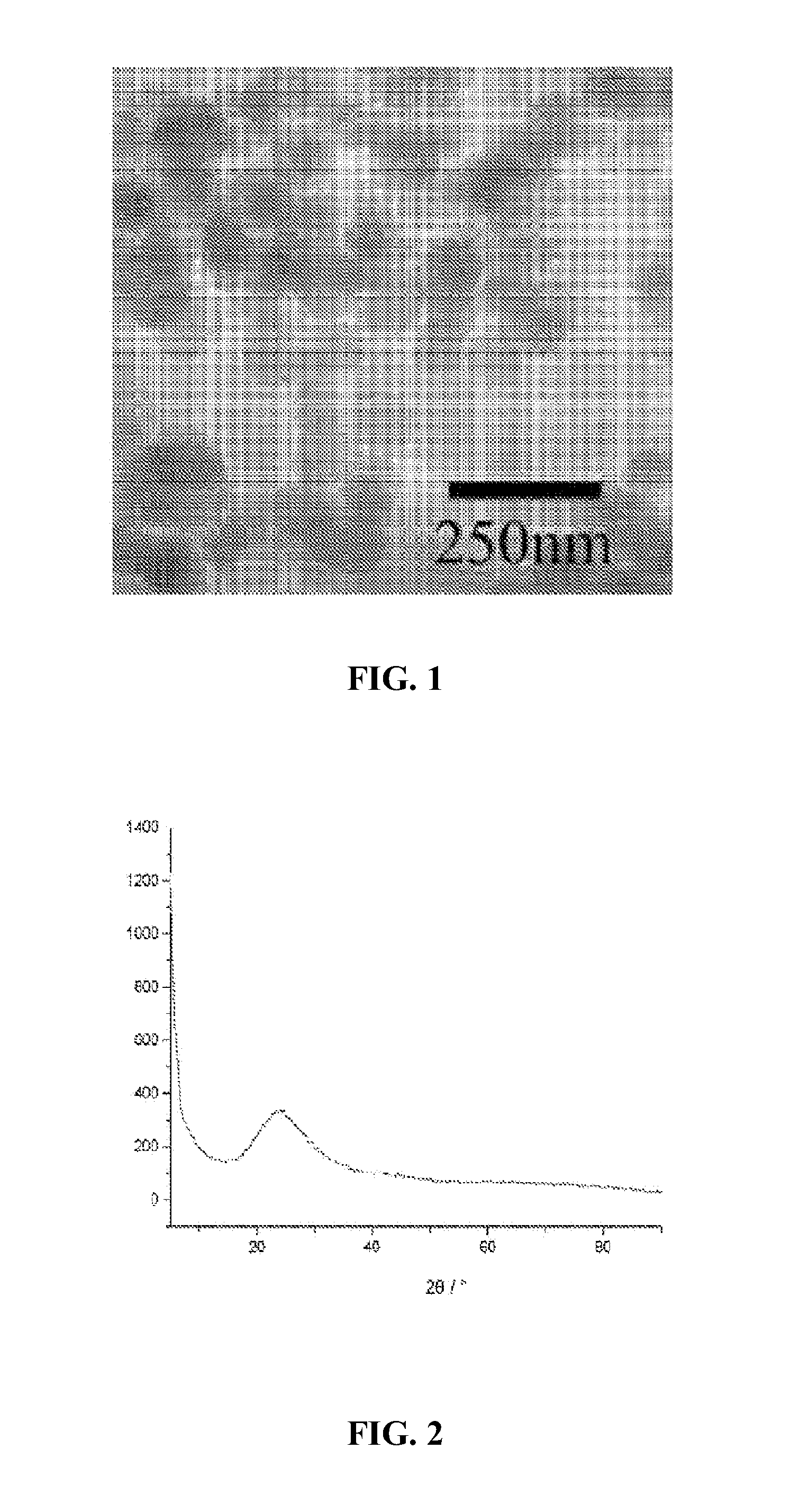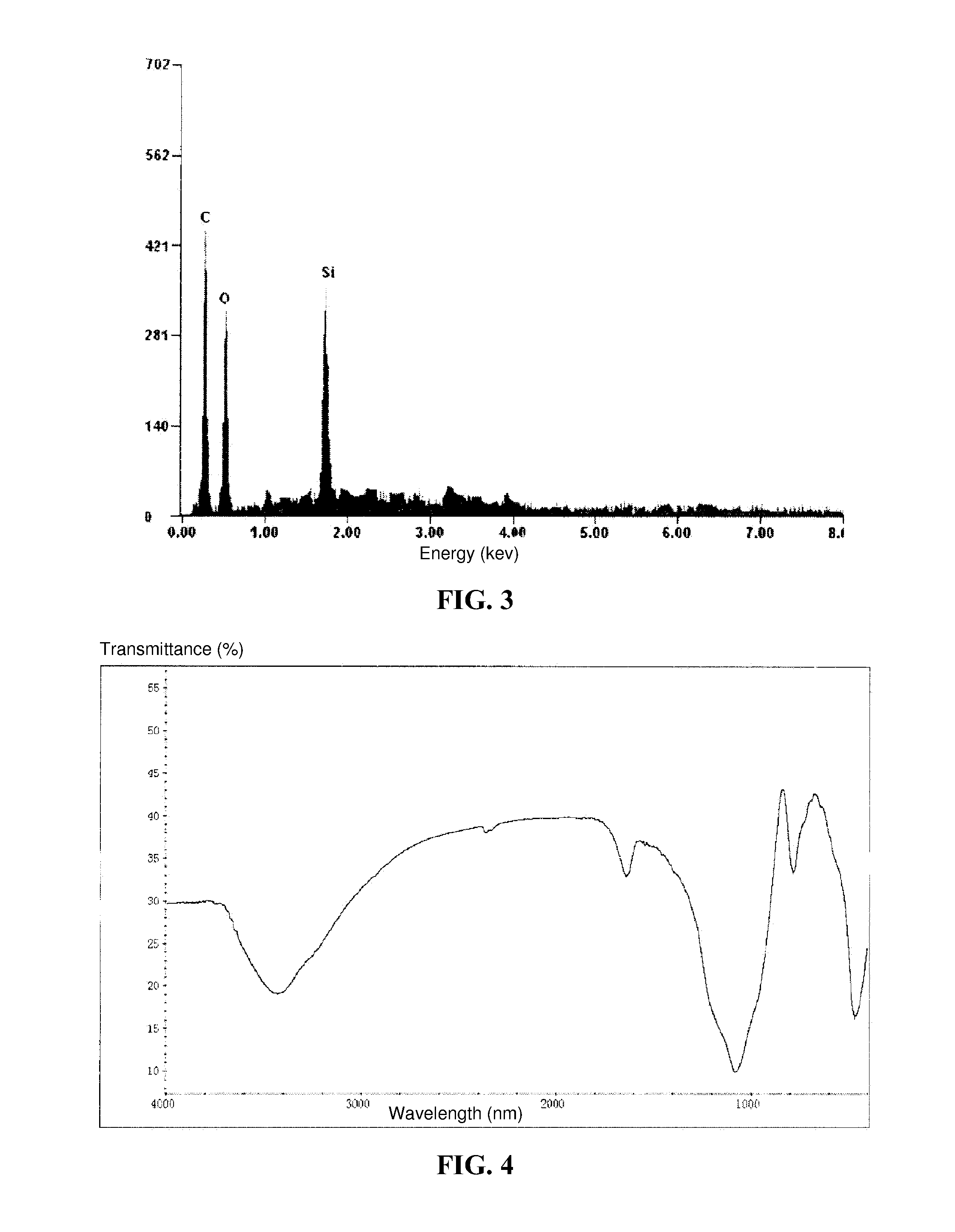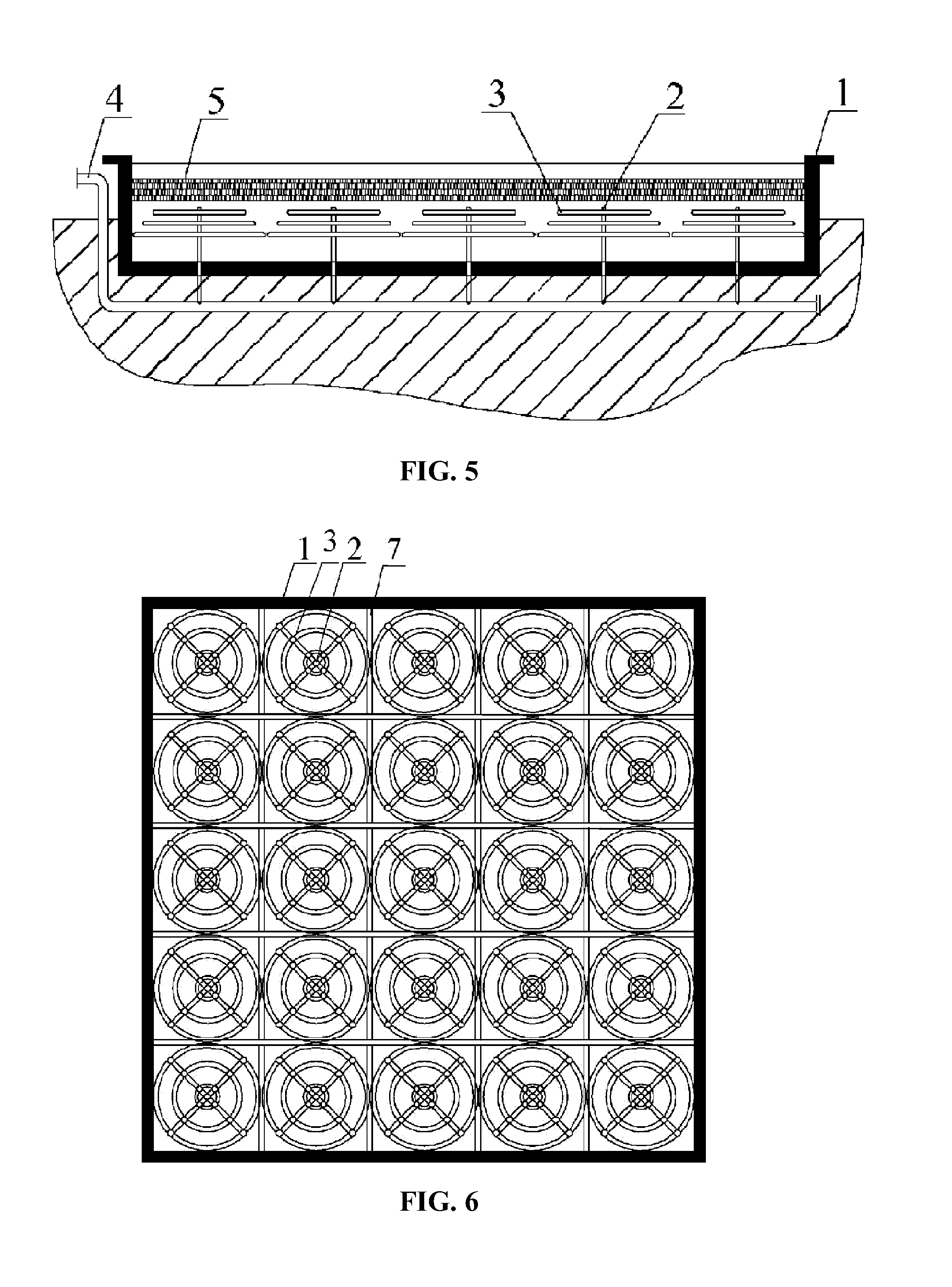Method for preparing surface-modified nanosilicon dioxide from rice hulls
a technology of nanosilicon dioxide and rice hull, which is applied in the field of preparation of surface-modified nanosilicon dioxide materials from rice hull, can solve the problems of large amount of chemicals, large amount of chemical consumption, and large amount of pollution, and achieve the effects of improving the solubility of carbon dioxide in water, increasing gas pressure, and increasing equilibrium pressure of carbon dioxid
- Summary
- Abstract
- Description
- Claims
- Application Information
AI Technical Summary
Benefits of technology
Problems solved by technology
Method used
Image
Examples
example 1
[0050]1. 10 kg of rice hulls are collected and treated by industrial flue gas in order to remove metal ions, impurities, and dusts, which is specifically conducted as follows:
[0051](1) As shown in FIGS. 5-6, a water storage reactor 1 having a depth of 7 m and both a width and a length of 100 m is constructed. 25 gas dispersion apparatus for discharging industrial flue gas are disposed at a bottom part of the water storage reactor. Each gas dispersion apparatus comprises a longitudinal gas pipe 2 and at least one annular gas pipe 3 being horizontally arranged and communicating with an upper end of the longitudinal gas pipe.
[0052]Specifically, a plurality of gas jetting holes (not shown in the drawings) is circumferentially disposed on the annular gas pipe and faces inclinedly downwards, so that a vortex agitation of the water body is produced by the ejected flue gas. An angle between an axis of the gas jetting hole and a horizontal plane is 20°. A projection of the axis of the gas je...
example 2
[0071]1. 10 kg of rice hulls are collected and treated by industrial flue gas so as to remove metal ions, impurities, and dusts, which is specifically conducted as follows:
[0072]As shown in FIG. 7, a reaction tank 15 is configured. The reaction tank has a height of 15 m, an inner volume of 1000 m3. A gas distributor 9 provided with microporous aerators is arranged at a lower part of the reaction tank, a circulating liquid outlet 8 is disposed on a wall of the reaction tank beneath the gas distributor, and a gas outlet 12 is disposed at a top of the reaction tank. A bottom of the reaction tank is a tapered part 11 used to collect precipitants and is provided with a precipitant outlet 10. An upper part of the reaction tank is provided with a mist eliminator 14 and a grid-like package pressing plate 13. The mist eliminator 14 is arranged above the grid-like package pressing plate 13.
[0073]When using the reaction tank, rice hulls 5 and water are firstly added to the reaction tank. The r...
example 3
[0077]1. 10 kg of rice hulls are collected and treated by industrial flue gas in order to remove metal ions, impurities, and dusts, which is specifically conducted as follows:
[0078](1) As shown in FIGS. 5-6, a water storage reactor 1 having a depth of 7 m and both a width and a length of 100 m is constructed. 25 gas dispersion apparatus for discharging industrial flue gas are disposed at a bottom part of the water storage reactor. Each gas dispersion apparatus comprises a longitudinal gas pipe 2 and at least one annular gas pipe 3 being horizontally arranged and communicating with an upper end of the longitudinal gas pipe.
[0079]Specifically, a plurality of gas jetting holes (not shown in the drawings) is circumferentially disposed on the annular gas pipe and faces inclinedly downwards, so that a vortex agitation of the water body is produced by the ejected flue gas. An angle between an axis of the gas jetting hole and a horizontal plane is 20°. A projection of the axis of the gas je...
PUM
| Property | Measurement | Unit |
|---|---|---|
| temperature | aaaaa | aaaaa |
| temperature | aaaaa | aaaaa |
| angle | aaaaa | aaaaa |
Abstract
Description
Claims
Application Information
 Login to View More
Login to View More - R&D
- Intellectual Property
- Life Sciences
- Materials
- Tech Scout
- Unparalleled Data Quality
- Higher Quality Content
- 60% Fewer Hallucinations
Browse by: Latest US Patents, China's latest patents, Technical Efficacy Thesaurus, Application Domain, Technology Topic, Popular Technical Reports.
© 2025 PatSnap. All rights reserved.Legal|Privacy policy|Modern Slavery Act Transparency Statement|Sitemap|About US| Contact US: help@patsnap.com



